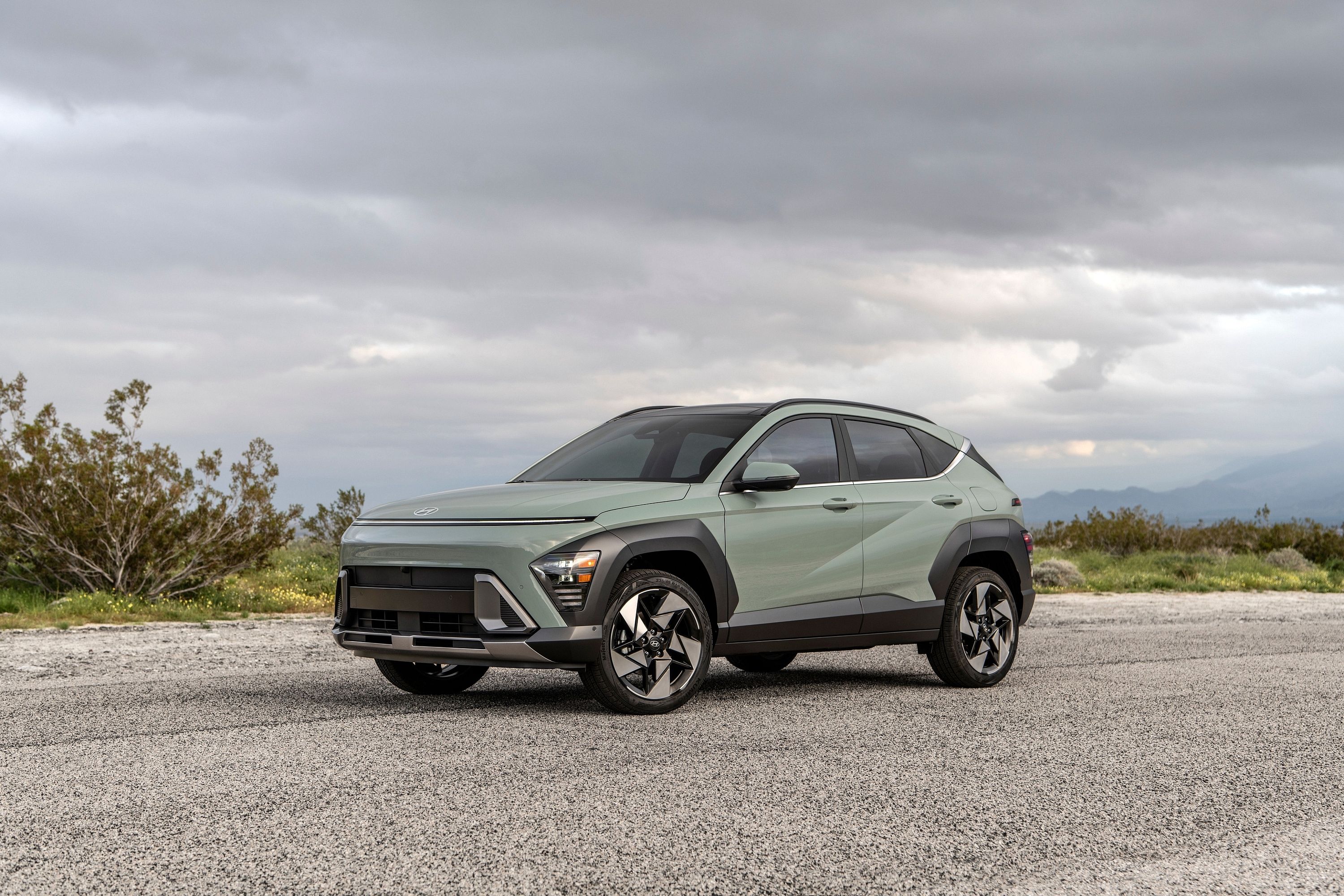
We've known for a couple of months now that Hyundai was getting ready to reveal the Bayon, a new subcompact crossover designed with the European market in mind. In that part of the world, where narrow city streets are the norm, the tiny Bayon makes a lot of sense. We last got a close look at the Bayon in late January, when a render artist visualized what the crossover would look like based on an earlier teaser image. That render appears to have been extremely accurate. This is a modern-looking vehicle with lots of sharp creases that should find favor with a younger crowd.
Hyundai says that the Bayon is its smallest SUV, but at 164.6 inches, it's actually just over half an inch longer than the Kona. However, the Bayon is narrower, at 69.9 inches compared to the Kona's 70.9 inches. The Hyundai Venue sold here is shorter and narrower than the Bayon.
The shape is inspired by Hyundai's Sensuous Sportiness design philosophy and is characterized by elements like three-part front lights, a wedge-shaped profile, and arrow-shaped taillight clusters. Base models ride on 15-inch steel wheels, a sign of the Bayon's entry-level status, but 16- and 17-inch alloys are available.
The cabin evokes a sense of spaciousness and is advanced for the segment in which the Bayon competes. Along with an available 10.25-inch digital gauge cluster, either an eight-inch or a 10.25-inch infotainment screen is on offer. With the smaller eight-inch screen, there is wireless operation of both Apple CarPlay and Android Auto. Hyundai also offers wireless charging, three USB ports, and a Bose premium sound system, all features that will be much appreciated by a more youthful clientele.
Just because this is a small vehicle, that doesn't mean it isn't a safe one, either. The Bayon can be equipped with numerous SmartSense technologies like navigation-based smart cruise control, high beam assist, lane-keeping assist, parking assist, and blind-spot collision warning. Hyundai has been able to free up 34.7 inches of rear legroom, nearly identical to the Kona's 34.6 inches. However, the Bayon has more head clearance for those at the back. The cabin can be trimmed in plain black or other color combinations like Dark Grey/Light Grey and Dark Grey with Safari Green stitching/inserts. Classy LED ambient lighting is on offer.
The base engine is a 1.2-liter four-cylinder with just 83 horsepower. With a five-speed manual gearbox, this version will stroll to 62 mph in 13.5 seconds. Above this is a 1.0-liter T-GDi three-cylinder turbo with 99 hp. Another two versions of this 1.0-liter power plant gain 48-volt mild-hybrid assistance and will make either 99 hp or 118 hp. The most powerful model will sprint to 62 mph in 10.4 seconds, whether it's equipped with a six-speed intelligent manual transmission (iMT) or a seven-speed dual-clutch automatic. The iMT 'box can disengage the engine from the transmission, allowing the Bayon to coast for brief periods. Unusually for a small car, the Bayon can be specified with a rev-matching function when equipped with the 1.0-liter engine and the DCT, or the mid-hybrid and iMT combination.
Overall, the Bayon sounds like the perfect starter SUV for Euro customers, but its low-powered engines and the availability of both the Venue and the Kona in the US means the Bayon won't make it stateside.
